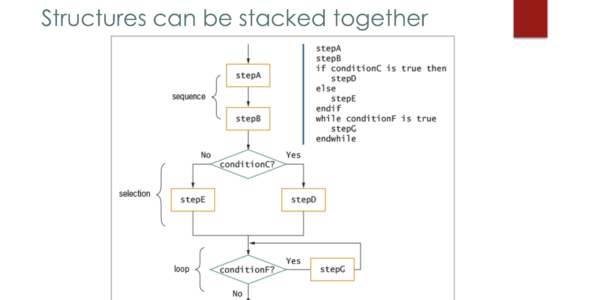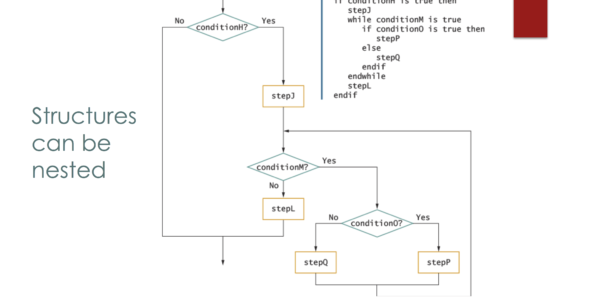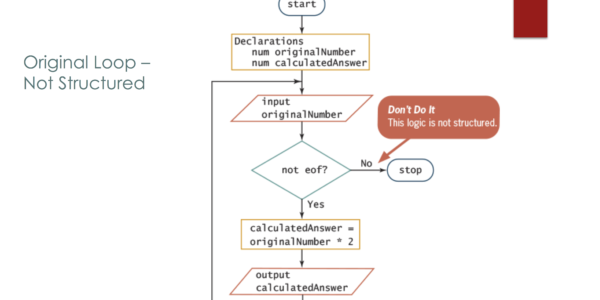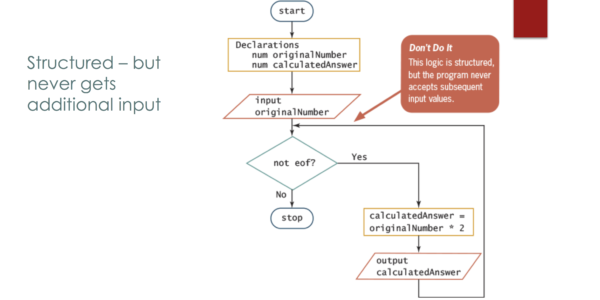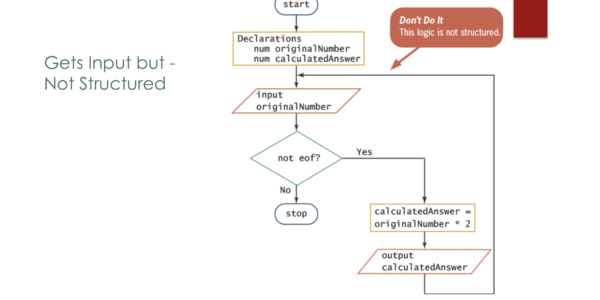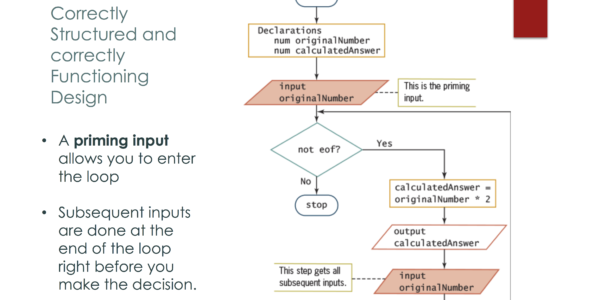Programming Models
Older Programming Languages (assembly)
- Required programmers to work directly with memory addresses and machine language codes
- Older languages were written in one piece
- Not structured
Newer Structured and Object-Oriented Languages
- More like natural language and use named variables instead of memory addresses
- Allow the development of smaller modules that are reusable and connectable in different ways.
- Problems are broken down into smaller pieces and teams of programmers work on the separate modules.
Procedural Programming
- Focuses on procedures or functions that perform actions
- Problems are broken down in to subtasks.
- Example: a payroll program could be broken into modules:
- to compute withholdings
- to format and print paychecks u to deduct benefits costs
Object-oriented Programming
- Focuses on objects or “things” and describes their features (attributes) and behaviors.
- Modules are developed by object u Example: a payroll application would
- Example: a payroll application would have:
- employee objects with behaviors such as selecting benefits
- paycheck objects with behaviors such as paychecks being printed and determining deductions
Assignment Statements
- Setting a value into a variable
- set myAnswer = myNumber *2
- In this assignment statement, there are two actions taking place
- First the computer calculates the value of myNumber *2
- Second the computer stores the computed value in myAnswer
- The equal sign is the assignment operator
- set someNumber = 2
- set someNumber = 3 * 7
- set someNumber = someOtherNumber
Arithmetic Operations
+ (plus sign) – Addition
– (minus sign) – Subtraction * (asterisk) – Multiplication
/ (slash) – Division
- Consider rules of precedence and order of operations and left-to-right associativity
- Use parentheses to clarify the order you want
Modularization
- Break down a program into units called modules (other names are procedures, functions, methods or subroutines)
- The process of breaking down a large program into modules is called modularization
- Why do we do this?
- Modularization provides abstraction
- Modularization allows multiple programmers to work on a problem
- Modularization allows you to reuse your work more easily
Abstraction is the process of paying attention to important properties while ignoring non-essential details.
With Abstraction
- Do laundry
- Call mom
- Start programming assignment
Without abstraction
- Pick up laundry basket
- Put laundry basket in car u Drive to laundromat
- Get out of car with basket u Walk into laundromat
- Set basket down
- etc.
Abstraction with Modules
- Example: a payroll program calls a module computeFederalWithholdingTax()
- You use this one statement in your Pseudocode
start
get hours, salary
computeFederalWithholdingTax()
print paycheck
stop
- The module may be very complicated – you can write it later, purchase commercial software, have someone else write it.
- When planning the main program, you don’t care about the details
Modularization
- Multiple programmers can work together by having each individual work on separate modules
- Modularization promotes reusability
- Create a library of well-tested, well-functioning modules that can be utilized in many different programs
- Programs are more reliable when comprised of these modules
- Reusability saves time and money
Modularizing a Program
- Most programs consist of a main program which contains the basic steps or mainline logic of the program
- The main program accesses the modules that provide the details. u Modules contain:
- Header – includes the name and possibly descriptions of data that needs to be provided to the module
- Body – all the statements in the module
- Return statement – marks the end of the module and identifies when control returns to the main program
- Modules names usually start with a verb like calculate or determine and when used in Pseudocode are followed by parentheses.
Without modularization
start
Declarations
string name
num balance
input name, balance
output “ABC Manufacturing”
output “ 47 Park Lane”
output “Omro, WI 54963”
output “Customer”, name
output “Total”, balance
stop
With modularization
start
Declarations
string name
num balance
input name, balance
displayAddressInfo()
output “Customer”, name
output “Total”, balance
stop
displayAddressInfo()
output “ABC Manufacturing”
output “47 Park Lane”
output “Omro, WI 54963
return
Structured vs. Unstructured
- Structured programs follow the rules of structured logic; unstructured programs do not
- Unstructured programs are often referred to as spaghetti code because the logic is as difficult to follow as a single noodle of spaghetti on a plate.
- All programs, no matter how complicated, can be constructed using one or more of only three structures
- Sequence
- Selection
- Loop
Sequence Structure
- Perform the first action, then the next then so on…
- There is no branching, (no decision or loop)
- Good example is driving directions
